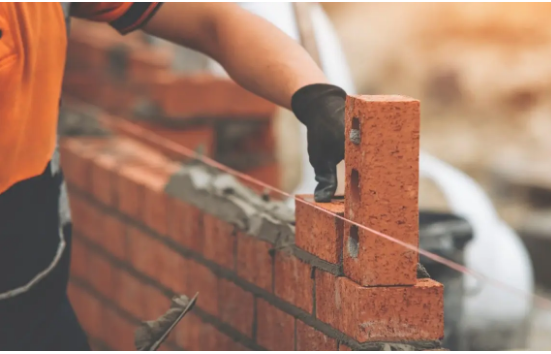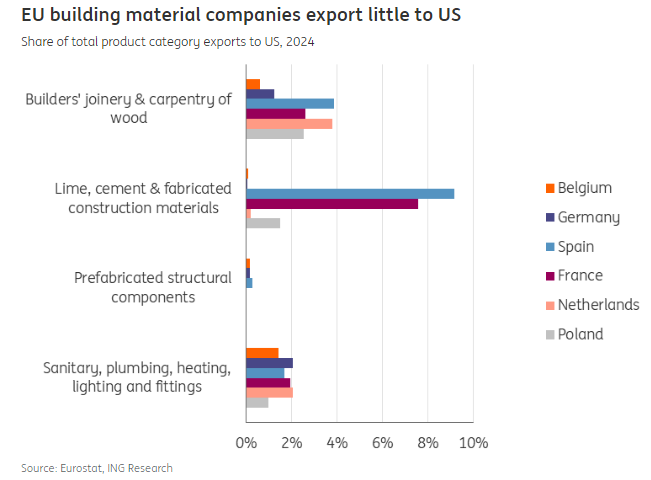
The European building material industry is beginning to rebound
after experiencing a significant decline. We think this recovery
will persist as the housing market steadily improves. US import
tariffs on EU products are expected to have a minimal impact on
most European building material suppliers
Further recovery expected in the building material industry
We anticipate a further revival of the building material
industry in 2025, encompassing concrete, cement, and bricks. The
sector faced significant challenges in 2022 and 2023 due to a
decline in demand for new houses, the primary market for
building material companies producing these products.
However, house prices of existing homes have started to increase
in many European countries. This is a positive indicator for new
developments, as the prices of newly built and existing homes
typically follow each other closely; they cannot diverge too
much since new and existing houses are substitutes for
consumers. Therefore, new building developments will lead to
increased demand for building materials.
In most European countries, building material suppliers'
production levels plummeted in 2022 and 2023. Volumes were down
by almost 15% in Spain and by around 25% in Belgium and Germany
at the beginning of last year. Yet, we also observed the first
signs of a recovery in 2024. Poland and the Netherlands are
experiencing the largest comebacks. These countries have seen
the biggest uptick, at 16% and 12%, respectively. In Germany,
production is still at a very low level but has started to
increase slowly as well.
It is only in France and Austria where volumes have decreased
further. In a European Commission business survey, building
material companies in these two countries are the most
pessimistic about the development of further production in
February 2025.
We believe that volumes in the building material sector will
slowly further improve in 2025. In many urban European areas,
there is a structural high demand for new houses. As mentioned
earlier, house prices are improving and this makes the business
case for new house developments and consequently the demand for
building materials stronger. Nevertheless, higher interest rates
could slow down the pace of this process.
Prices of concrete, cement and bricks stable
Building material prices, such as concrete, are very stable and
have almost not moved during the last two years. You might
expect a price decline here as demand has significantly slowed,
but the prices of concrete, cement and brick remain sticky.
Building materials such as concrete and cement are heavy and
voluminous. This is why they're often traded on relatively small
local markets, resulting in less competition. This gives the
suppliers of these products a bit of market power, which usually
results in both higher prices and lower price volatility. They
do not have to pass on price reductions of raw materials or
energy costs directly because of the relatively limited
competition. As a result, the output prices of these products
rise ¨C and fall ¨C at a slower rate compared to building
materials such as steel, which are traded in more competitive
markets.
The graph above also shows that the steel price follows a
bumpier road. US tariffs on metals could also result in trade
diversion from other origins, which could directly affect local
EU metal prices.
Timber more expensive, plastics cheaper
The prices of many building materials are relatively steady. The
cost of timber has slowly increased and prices were 7% higher in
January 2025 compared to the same month a year earlier,
following a decline of 4% in 2023. Plastic prices have remained
more or less the same compared to two years ago.
US import tariffs won¡¯t harm the EU building material sector
of concrete, bricks & cement
Many building materials, such as concrete, bricks, and cement,
are heavy and thus costly to transport, resulting in limited
exports from the EU to the US. For most building material
categories from EU countries, less than 3-4% is exported to the
US. Only France and Spain have a higher share of their exports
to the US for lime, cement, and fabricated construction
materials. However, the exported volumes remain low. For
example, French building material suppliers exported only €55m
worth to the US in 2024.

Source:
think.ing.com